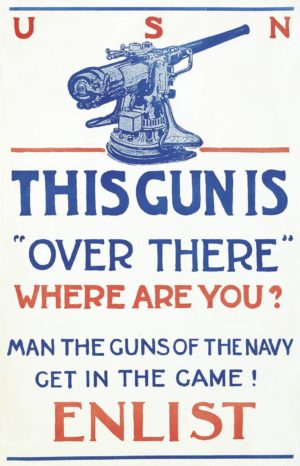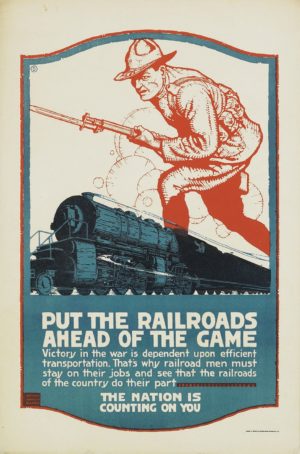Description
Galambos: War Exhibition May-October 1918. Sinister Austro-Hungarian infantryman fixes civilians with his unseen yet powerful stare as he peers out from underneath the steel brim of his Austrian helmet which casts a deep shadow over his eyes, something like a naturally occurring mask, in this poster advertising an exhibition running throughout the summer and fall of 1918 on Margret Street in Budapest.
These wartime exhibitions were often comprised of war booty taken from the enemy in battle; in Hungary’s case this meant the Russians to the east or the Italians to the south. This exhibition appears to be held at an odd time given the fact that Hungary and Austria, to which Hungary had been yoked since 1867, were clearly on the ropes by 1918. In fact, the month after this exhibition ended, Austria-Hungary sued for peace when 100,000 workers rioted in the streets of Budapest. Hungarian soldiers had already refused to fight in Italy, France and even Hungary itself (Pecs).
Immediately after the cessation of hostilities, a communist revolution broke out in Hungary led by Bela Kun, a former captured Austro-Hungarian prisoner of war radicalized in Bolshevik prisoner of war camps, communist depredations continued for nine months delaying peace talks and plunging Hungary into a brutal civil war that was crushed only with the use of right wing forces (The White Terror) and the foreign intervention of its neighbors. But still worse was to come.
When Hungary was forced to sign a draconian peace (The Treaty of Trianon 1920) with the victorious allies it lost Slovakia, Ruthenia, Transylvania and the region of the Banat was transferred to the newly created south slav state of Yugoslavia. Given these devastating territorial loses, Hungarians became a minority in their own country which, of course, sowed the seeds of discontent which sprouted again and again in the ’20s and ’30s.
This poster’s intimidating image makes one think of other posters in which the German helmet plays a prominent role. These include Grohe’s unsettling He’s Watching You 1942 in which Japanese eyes peer back at onlookers from under the steel cover of a German helmet. The Japanese and Germans were, of course, allies in WWII, and this is a clever, very clever, way of linking our two mortal enemies together in one scary if not to say downright sinister image. Also, Ludwig Hohlwein’s powerful And You? (Und Du? 1932) quickly comes to mind. This political poster was displayed during the German national elections the year it was printed for a German, WWI, combat veteran’s organization known as Der Stahlhelm (The Steel Helmets). In that striking poster Hohlwein shows only a soldier’s head crowned as it were by his helmet which casts his eyes in deep shadow completely concealing them but not his steadfast determination which clearly shows in the firm set of his jaw which emerges from beneath the shadow’s dark rim.
For anyone particularly interested in German helmets War Exhibition May-October 1918 is of note because Galambos focuses on the helmet’s details. Its distinctive shape has a very long European history dating back some 400 or 500 years to Italy and Germany. Its overall depth and flaring back and side rims covered a greater area of its wearer’s head and neck thus affording better protection to the skull and the nape of the neck. In comparison, English helmets, with which doughboys were often equipped, sat much higher on the head leaving more of it unprotected from bullets and shell fragments.
Keep in mind that in the trenches only a soldier’s head was visible to the enemy resulting in an increased number of deadly head wounds. This was the reason why opposing armies adopted steel helmets in 1916.
The German steel helmet shown here, with which the Austrians and Hungarians were equipped, was designed by an army engineer, Herr Friedrich Schwerd, who attached two steel lugs high up on either side where a man’s temples are located. These lugs, together with a leather strap, secured a 4-5 mm. thick, curved metal plate to the helmet’s front giving the wearer’s forehead greater protection. The forehead was the flattest and broadest aiming point that an enemy sniper could target. Although the Germans produced 50,000 of these metal helmet shields between 1916 and 1918, they were seldom used because their weight increased and unbalanced the helmet’s overall weight so much so that they were impractical in combat. That’s why they don’t appear in German posters. 37×24 ML $3500.
37×25 mint, conservation backed.





